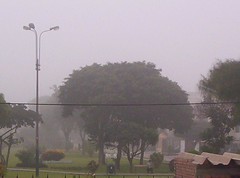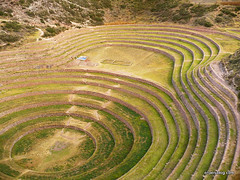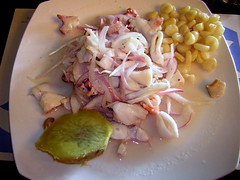The missing link in Lambayeque
Researchers scouring the Lambayeque region for decades in an attempt to discover more about its most ancient past have directed their attention towards the archaeological site of El Chorro, located in the district of Pomalca.
Their efforts were successful.
Just days ago a number of tombs were discovered dating back from between 800 and 2000 years – a date span that would act as a historical ladder linking all the different Lambayeque cultures.
The findings in the central sector of the five hectare complex began on October 19th, and since then five different tombs have been found, including that of an adult woman. Found with the burials were metal needles, cotton fibres and other instruments used to weave clothing.
Edgar Bracamonte, archaeologist in charge of the excavation, told Peruvian newspaper El Comercio that these graves span from the Early Intermediate Period to the Late Formative Vicus cultures, the Chimú and the Lambayeque (Sicán).
Historic Significance
During the few first days of work, the discovery of raided graves led researches to believe the pre-Inca site had been completed destroyed. In fact, the archaeologists began work in something of a frantic emergency because of the amount of looting taking place at the complex.
They were pleasantly surprised when they eventually discovered ceremonial knives from the Late Formative Period, before going on to find unspoilt tombs.
Archaeologist Luis Chero explained that the site is important because it will help us to understand what happened between Chavín and Mochica periods, something we don’t have much information about.
“What we found is a kind of missing link, which will give us some data regarding what happened in the transition between the decline of the Chavín civilisation and the start of the Moche one”, he explained.
For archaeologist Bracamonte, more surprising is the discovery of metal objects with different layout than those found in previous excavations, including ornaments of round copper and gold rectangular plates that belong to the Vicus culture.
Looms have also been rescued, as well as 19 ceramic vessels with Vicus characteristics and seven gilded copper objects that were placed in the arms and on the heads of the deceased.
Destruction
These findings show that much more valuable work must be done in the area, and specifically at the El Chorro site. To do this, researchers are seeking urgent intervention by the local government to prevent the site being over run with encroaching human settlements.
“They have even built a modern cemetery on top of the buildings of our ancestors”, warns Luis Chero.
Several families in the area also dedicate themselves entirely to the looting and desecration of ancient tombs, as is done across most of Peru.
By Wilfredo Sandoval for El Comercio
Tags: chiclayo, chimu, el chorro, invasiones, lambayeque, moche, pomalca, ruins, sican, tombs, vicus










